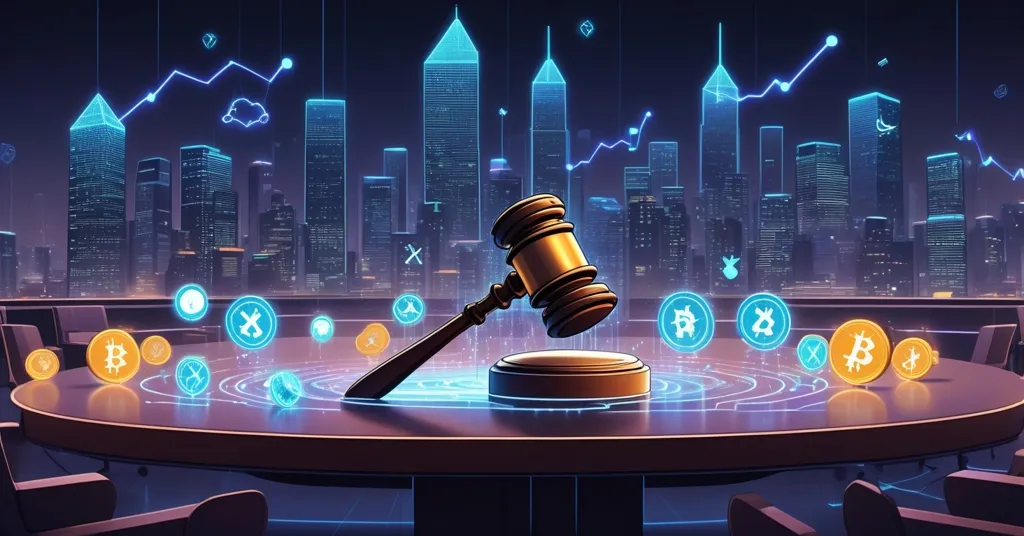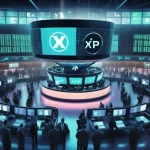Ripple-SEC Lawsuit Nears End: Letter to Judge Torres Signals Final Steps

Breaking: Ripple-SEC Case Edges Closer to Resolution with Letter to Judge Torres
A major milestone has emerged in the prolonged legal clash between Ripple and the U.S. Securities and Exchange Commission (SEC), as a letter to Judge Analisa Torres signals the wrapping up of administrative details. With both parties withdrawing their appeals and a settlement seemingly on the horizon, this could mark the end of a saga that has gripped the crypto world since 2020. Yet, uncertainties linger, and the broader implications for digital assets remain a hot topic.
- Letter to Judge Torres requests removal of an investment banker witness, indicating final procedural steps.
- Ripple and SEC drop appeals, hinting at a potential settlement with a reduced $50 million penalty.
- XRP price spikes nearly 6%, with trading volume up 23%, reflecting market optimism amid legal progress.
Legal Updates: Tying Up Loose Ends
The Ripple-SEC lawsuit, launched in December 2020, has been a defining battle for cryptocurrency regulation. The SEC accused Ripple of selling XRP as an unregistered security—a financial product like a stock or bond that requires formal registration or exemption under U.S. law. Ripple has consistently argued that XRP is a currency or utility token for its blockchain payment network, not an investment contract under SEC purview. For those new to the space, this distinction is critical: labeling XRP a security could impose strict compliance burdens, potentially reshaping how altcoins operate in the U.S. and beyond.
Fast forward to now, and a letter from Andrew Kunsak of Sidley Austin LLP to Judge Torres marks a key procedural moment. Kunsak requested the dismissal of an investment banker witness from the court’s docket—an expert brought in since August 2023 to provide testimony on protecting investor interests. As Kunsak noted,
“The confidentiality of their testimony is not an issue being appealed.”
With the witness’s role complete and Kunsak himself departing the firm with no replacement counsel stepping in, this housekeeping move suggests the case is in its final stages. It’s not a headline-grabber, but in legal terms, it’s often the quiet paperwork that signals the finish line. For more on this latest development, check out the update on the Ripple-SEC case nearing its conclusion.
Adding to the sense of closure, both Ripple and the SEC have withdrawn their appeals in the 2nd Circuit Court. This follows a mixed history of rulings, including a partial victory for Ripple in 2023 when Judge Torres determined that XRP sales on public exchanges did not constitute securities transactions. Despite this, disputes persisted until this mutual stand-down hinted at a settlement. However, not everything is smooth sailing—Judge Torres recently denied a motion for an indicative ruling, a procedural step that could have expedited the lawsuit’s end, even with a proposed reduction of Ripple’s civil penalty to $50 million. The exact reasons for the denial remain unclear, but it points to lingering details or formalities yet to be ironed out.
Market Reaction: XRP Rides the News Wave
The market hasn’t slept on these developments. XRP’s price surged nearly 6% in the past 24 hours, trading at approximately $0.56 (based on current data) with a range of $0.53 to $0.59. Trading volume also spiked by 23%, a clear sign of heightened investor activity. But let’s pump the brakes before we call this a victory lap—is this surge a genuine vote of confidence in Ripple’s future, or just another speculative frenzy fueled by legal headlines? History leans toward the latter. XRP’s price has long been a volatile puppet on the strings of courtroom drama, with similar pops after past rulings often fizzling out. For perspective, Bitcoin, the gold standard of crypto, rarely jumps this much on isolated news, a reminder why some maximalists view altcoins like XRP as a riskier gamble. Still, for XRP holders who’ve endured years of uncertainty, any green on the chart is a welcome breather.
Ripple’s Vision: Beyond the Courtroom
Ripple CEO Brad Garlinghouse is already looking past the legal mire, stating,
“We’re closing this chapter once and for all, and focusing on what’s most important – building the Internet of Value.”
This isn’t just corporate jargon. The “Internet of Value” is Ripple’s ambitious plan to revolutionize global payments, creating a high-speed, low-cost highway for money transfers across borders, sidestepping the sluggish, pricey detours of traditional banking systems like SWIFT. XRP acts as a bridge currency in this setup, facilitating instant transactions between different fiat currencies. It’s a niche Bitcoin doesn’t directly tackle, as BTC focuses more on being a decentralized store of value or medium of exchange without a corporate hand at the wheel. For enterprise-grade solutions, Ripple’s model has appeal, even if it draws flak from decentralization purists who balk at the company’s significant control over XRP’s supply.
Counterpoint: The Road Ahead Isn’t Clear
Before we get too bullish, let’s face facts: the legal system doesn’t operate on crypto’s breakneck timeline. Judge Torres’ rejection of the indicative ruling shows there are still hurdles, possibly tied to the specifics of the $50 million penalty or undisclosed SEC conditions. And while $50 million is a far cry from the billions initially floated, it’s not chump change. Compared to Ripple’s market cap—hovering over $30 billion with XRP at current prices—it’s manageable, but it still stings as a symbolic slap. More importantly, nearly five years of litigation have siphoned Ripple’s energy from innovation to defense. Can they pivot back to building with the same momentum, or has this battle left them limping at a critical juncture in the fintech race?
Then there’s the regulatory elephant in the room. The SEC’s approach—casting a wide net over tokens as securities—feels like swinging a wrecking ball when a precision tool is needed. It risks demolishing the very disruption we root for in this space. Bitcoin maximalists might shrug and say, “Stick to the king; altcoins are a regulatory minefield.” Fair point, but Ripple’s enterprise focus fills a gap BTC isn’t designed for. Still, their centralized structure—holding a massive chunk of XRP compared to Bitcoin’s miner-driven distribution—remains a sore spot for those of us who champion trustless systems. It’s a trade-off: practicality versus ideology.
Bigger Picture: A Test for All Altcoins
This isn’t just Ripple’s fight—it’s a litmus test for the entire crypto landscape. If the SEC can pin a $50 million penalty on Ripple, what’s stopping them from targeting Cardano, Solana, or Stellar next? Each altcoin has its own flavor of utility or innovation, but many share Ripple’s vulnerability to the securities label. A harsh precedent here could unleash a wave of crackdowns, chilling the experimentation that defines this industry. On the flip side, let’s not play naive—some tokens are little more than dressed-up Ponzi schemes, and a degree of oversight might weed out the grime. The trick is balance, something regulators haven’t exactly mastered. A Ripple resolution might offer temporary clarity, but the broader war over crypto’s legal status is far from over.
For now, Ripple’s survival and XRP’s price bump are small wins to note. But don’t bet your stack just yet—regulators are circling like hawks, and no altcoin is truly out of the crosshairs. That’s the $50 million question hanging over this space.
Key Takeaways and Questions
- What does the letter to Judge Torres mean for the Ripple-SEC lawsuit?
It’s a procedural step to remove an investment banker witness whose role is complete, often a signal that the case is nearing its final administrative phase. - Why did Judge Torres deny the indicative ruling to end the case?
Specific reasons aren’t public, but it likely points to unresolved issues or procedural requirements despite a proposed $50 million penalty and settlement talks. - How does the withdrawal of appeals impact Ripple and XRP?
It reduces legal uncertainty, contributing to XRP’s 6% price surge and suggesting a clearer path forward for Ripple’s operations. - What is Ripple’s ‘Internet of Value’ vision?
It’s a mission to transform global payments with blockchain, using XRP for fast, affordable cross-border transactions as an alternative to outdated systems like SWIFT. - Does XRP’s price surge indicate lasting market confidence?
The 6% jump and 23% volume increase show short-term optimism, but speculative trading tied to news often overshadows sustained trust. - What could the Ripple-SEC outcome mean for other altcoins?
A favorable resolution might ease fears of SEC overreach, while a tough precedent could trigger broader scrutiny of tokens like Cardano or Solana, stunting innovation.



